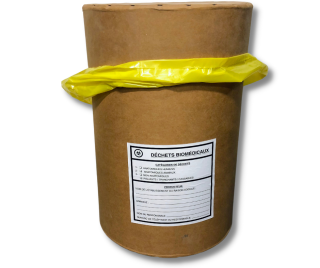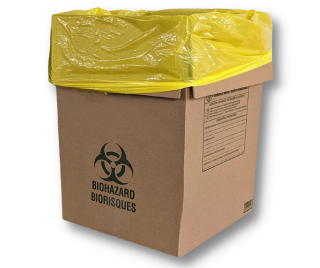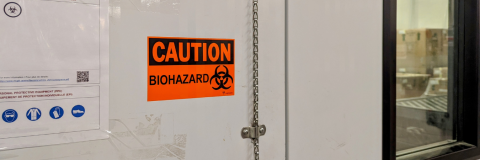Biomedical waste categorization
To determine which category to choose for your biomedical waste, consult this decision chart and select only one category (or use the text version).
Disposal service for biomedical waste is provided to users in McGill buildings at no charge by Hazardous Waste Management. The service includes the provision of waste containers and regular pick-ups.
To protect all from unnecessary exposure to biohazardous agents, biomedical waste must not be disposed of with regular waste.
Disposal of biomedical waste is governed by the Regulation Respecting Biomedical Waste (Québec), and encompasses the following categories:
- Human anatomical waste (body parts or organs),
- Animal anatomical waste (carcasses, body parts, organs),
- Sharps which have been in contact with animal or human blood, biological fluids or tissues
- Non-anatomical waste, which includes:
- Tissue or microbial cultures, and material contaminated by such cultures
- Live vaccines
- Containers or materials saturated with blood products.
- Cytotoxic waste must be identified as such and disposed of by incineration (refer to this list)
- Biomedical waste coming from outside Quebec.
Biomedical waste disposal guidelines
Biomedical waste should be disposed of frequently to reduce the accumulation of these materials in work areas. Waste boxes are to be filled by those who generate the waste, and must be packed and labeled as follows:
- Line your box with the plastic bag.
- Affix user identification to the outside.
- Place blades and needles in a Canadian Safety Association (CSA) approved plastic puncture-proof container (not provided by HWM) prior to disposal in the biomedical waste box.
- Pipette tips, pipettes (serological and other types) need to be placed in a secondary container (e.g., reused cardboard box, sturdy plastic bag, Ziploc) prior to disposal in the biomedical waste box. This is to prevent rupture of the bag.
- Do not compress the waste or overfill the box.
- No liquid is allowed in the biomedical waste box. Liquids must be sterilized then disposed of down the drain, or as chemical waste if deemed hazardous.
- Gels must be dried then sealed in a bag (e.g., Ziploc) before disposal in the biomedical box.
- If working in a biological safety cabinet, accumulate your waste in a small container or bag inside the cabinet, then seal it and transfer it to the biomedical box. This is considered "double bagging".
- Drop your anatomical waste (e.g., mice, rats) in a small plastic bag (not provided by HWM) prior to disposal in our lined box. This is considered "double bagging".
- Close the bag with a solid knot or use a tie wrap.
- Store the box at 4 ºC or lower in a locked refrigerator.
- Use separate boxes for each category of waste, e.g., human anatomical should not be mixed with animal anatomical or non-anatomical waste.
- If you are autoclaving your biomedical waste locally, please follow the disposal guidelines for autoclaved biomedical waste.
Containers
The following containers must be used to pack biomedical waste:
Biohazard fibre drum

Use: Large anatomical parts
Maximum weight: 80 lbs or 36 kgs
Supplied with: Bag and labels
Biohazard boxes

Use: Biohazard solids & cell culture.
Maximum weight (small): 30 lbs or 14 kg
Maximum weight (large): 30 lbs or 14 kg
Supplied with (small): Bag and labels
Supplied with (large): Bag and labels

